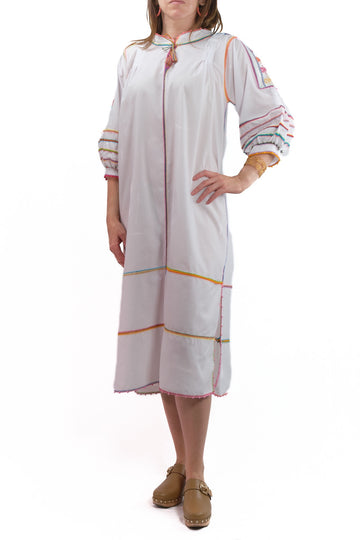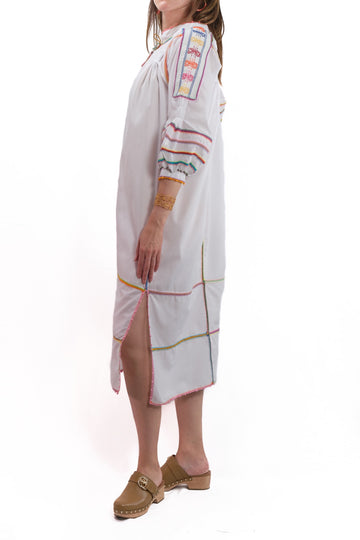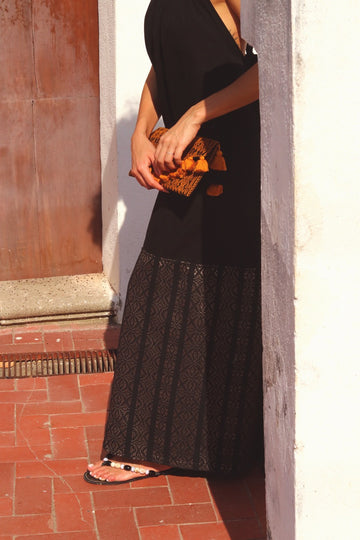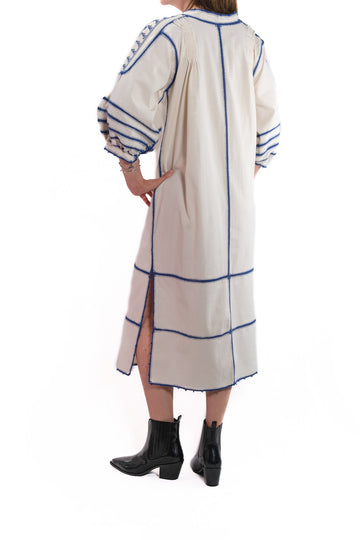To be clear, huipil and kaftan are not the same thing, although many people use both words indistinctly.
That is why I am going to tell you more about our textile art where the huipil is a key garment. In order to better understand a culture, we must dive into its origins and thus be able to appreciate what we see. Since I was a child I was interested in my culture because my mother always conveyed to us her taste for handicrafts and traditions. Now I want to share it with you and with this blog you will be able to understand key concepts behind a huipil.
- What does huipil mean and how it's made?
- Main differences among huipil and kaftan.
- A little bit of the symbolism of the huipil.
So let's start!
What does huipil mean and how is it made?
The word itself comes from the Mayan language which means adorned dress or blouse. It is a true work of art, since it is woven 100% handmade mostly under the backstrap loom technique where different symbols are embroidered as well. The material used is cotton or wool and the colors are more and more diverse. Some are still dyed naturally taking advantage of the insects and plants of the region.
It is really an asthonishing work and every time I see how they do it, I am always impressed by the dedication and precision of the artisans.
The cut of a huipil is loose but symmetrical, i.e. there is no stylization of the waist for example. It can be done from one to three looms, depending on the size you want to achieve. The maximum width of a loom is 62 cm and the length up to 135 cm. Of course, the more looms the more work for the artisan since they are not made in parallel, but they finish one loom to continue with the other.
Main differences among huipil and kaftan
In the fashion world many have used both concepts, huipil and kaftan, without making much difference. They only focus on seeing that both garments are loose fitting and made of cotton, although they can be made of other materials. However, the name is also part of the culture to which they belong. The huipil has its origin in Mesoamerica from Central Mexico to Central America and the kaftan in the Middle East.
The huipil is still made traditionally and can only be made by the communities where it originates. While the kaftan has been so standardized that different fashion brands have made it part of their collections, adapting all kinds of prints, colors, lengths, materials, etc.That is to say, it stops being a traditional garment of low scale, to become a garment marketed on a large scale.
If there is something I love about huipiles, it is precisely knowing that there is an artisan who has made the garment with her hands. That the history of her community and herself is represented there. Since the figures are not chosen randomly, but are part of their culture and have a meaning.
A little bit of the symbolism of the huipiles
The embroidery on the huipiles usually has geometric shapes, symbols that represent natural places where they live, such as mountains or rivers, and human figures, plants and animals. Each region or village represents different ideas. The states where huipiles are made are Chiapas, Oaxaca, Yucatan, Michoacan, San Luis Potosi, Guerrero and Nayarit. However, within each state there are many communities that in turn have their own symbology.
On the other hand, the experience of the artisan plays an important role, since when they are weaving a huipil they are not following a pattern or drawing and then embroidering over it. They are counting threads and making the different symbols as they have them in their mind. It is impressive what they achieve! Check the artisans that collaaborate with us, they are very capable persons!
As an example here are some of the figures that can be found in huipiles from the state of Chiapas. But as I said there is a huge variety and each community has its own symbolism.

This is how the huipiles can not be seen only as a common garment, they are original garments full of meaning. Unlike the kaftan, no one outside the community can make a huipil, and if they wanted to do so or copy their designs they would be appropriating a culture.
The huipils are full of symbolism with a reason for being, where they are telling us a story with their embroidery. Let's appreciate what is made slowly and help preserve it.
Wear a unique and unrepeatable huipil, visit our website and find garments full of life that will make you look amazing!












